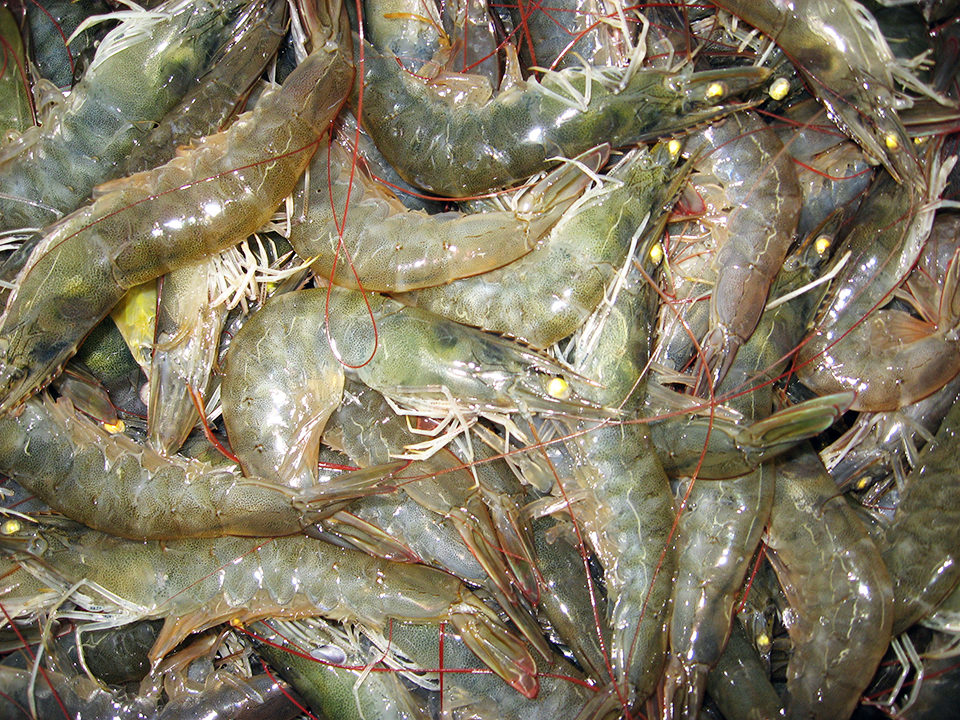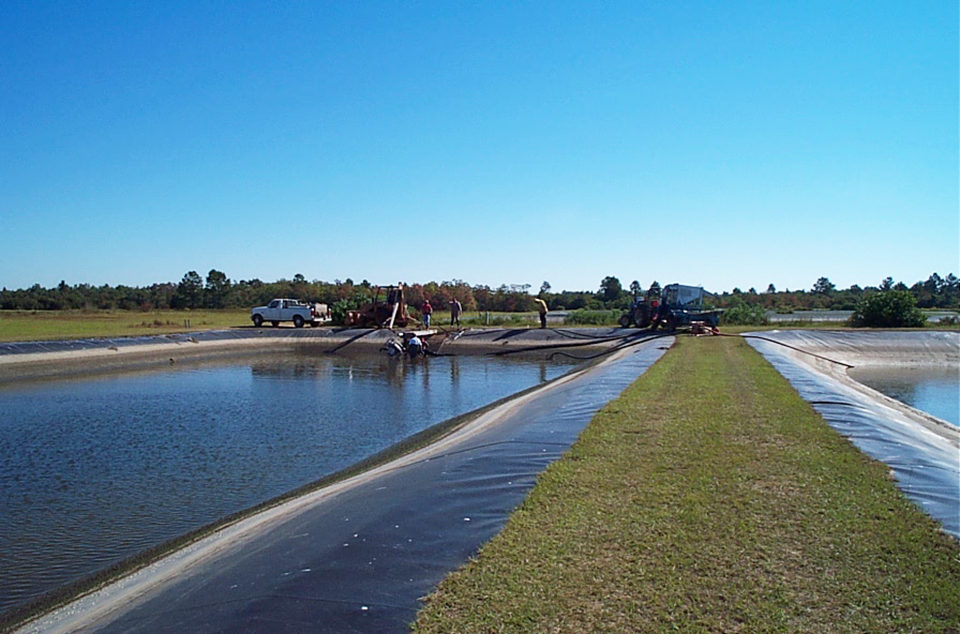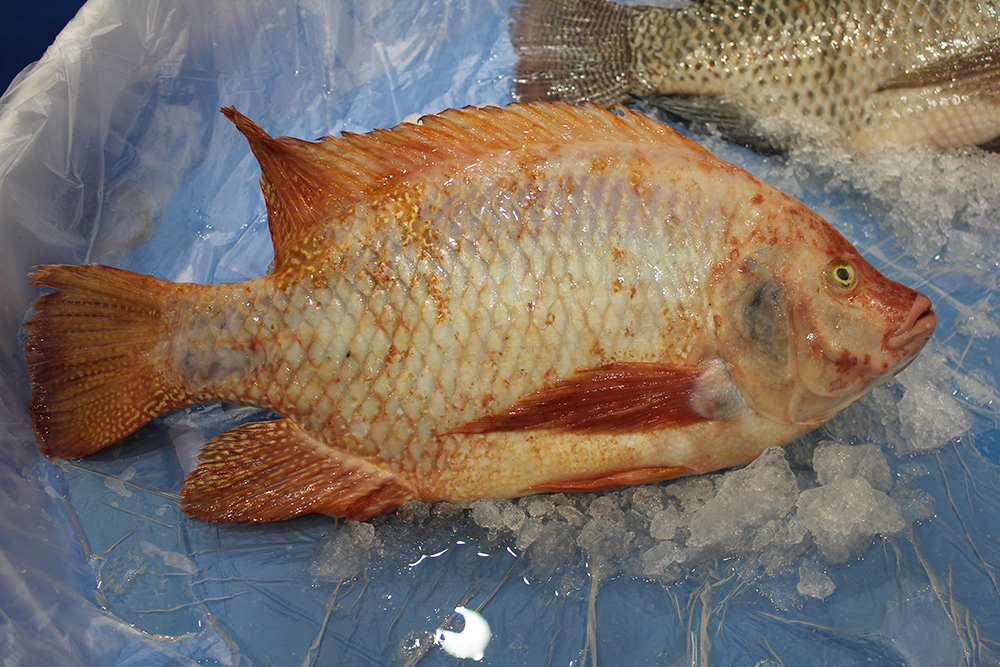Feed trials incorporate soybean, corn gluten meals

Given that feeds typically contribute 40 to 60 percent of the production cost of intensely reared shrimp, reducing the investment in feeds without compromising production output is a critical tool to reduce costs. One mechanism to reduce feed expenditures is reducing the cost of protein sources. In recent years, the replacement of fishmeal in diets has been gaining momentum due to increased demand and limited supply, which are driving up the cost of feed.
The idea of replacing fishmeal with animal byproduct meals, such as meat and bone meal, blood meal, feather meal and poultry byproduct meal in practical diets for Pacific white shrimp has been widely investigated. Replacing animal protein meals with plant proteins in well-formulated diets can reduce dependence on the animal protein industry and provide alternative choices when formulating feeds.
Studies by the authors examined the replacement of poultry byproduct meal using a combination of plant protein sources and low levels of squid meal in feeds formulated for Litopenaeus vannamei.
Pond study
In the demonstration, conducted at the Claude Peteet Mariculture Center in Gulf Shores, Alabama, USA, two growth trials were conducted in parallel utilizing 0.1-hectare production ponds and 800-L outdoor tanks. Four diets were commercially formulated to contain 35 percent protein, 8 percent lipid and varying levels (15, 10, 5, 0 percent) of poultry byproduct meal replaced by a combination of solvent-extracted soybean meal, distillers grain soluble and a low level of squid meal (Table 1). A commercial reference diet with 35 percent protein and 8 percent lipid was utilized as a reference in the outdoor tank system.
Markey, Composition (g/100 g) of practical diets, Table 1
| Ingredient | 15% PBM | 10% PBM | 5% PBM | 0% PBM |
|---|
Ingredient | 15% PBM | 10% PBM | 5% PBM | 0% PBM |
|---|---|---|---|---|
| Soybean meal | 40.85 | 46.54 | 52.32 | 58.02 |
| Sorghum | 29.83 | 25.18 | 19.99 | 14.85 |
| Poultry by-product meal | 15.01 | 10.01 | 5.00 | – |
| Corn gluten | 4.84 | 4.84 | 4.83 | 4.83 |
| Distillers grain solubles | – | 3.34 | 6.66 | 10.00 |
| Menhaden fish oil | 4.72 | 5.09 | 5.47 | 5.82 |
| CaP-dibasic | 2.65 | 2.90 | 3.13 | 3.38 |
| Bentonite | 1.50 | 1.50 | 1.50 | 1.50 |
| Squid liver | – | – | 0.50 | 1.00 |
| Mold inhibitor | 0.15 | 0.15 | 0.15 | 0.15 |
| Vitamin/mineral premix | 0.45 | 0.45 | 0.45 | 0.45 |
L. vannamei postlarvae were obtained from a commercial hatchery in Florida, USA. At the conclusion of a 21-day nursery phase, juveniles were pooled and stocked into 16, 0.1-hectare grow-out ponds at a density of 34 shrimp per square meter. Culture water was only exchanged to stimulate phytoplankton regrowth after an algae die-off or to top off ponds due to evaporation. To maintain minimal dissolved-oxygen levels greater than 2.5 ppt, each pond was provided with a base aeration capacity of 10 hp/ha (1 hp/pond) and additional emergency aeration throughout the grow-out phase.
Shrimp were fed daily in the morning and late afternoon following a predetermined feeding protocol. During the first four weeks of pond culture, the shrimp received 10, 15, 30 and 60 kg feed/ha daily. Thereafter, feed amounts were calculated based on an expected weekly weight gain of 1.5 grams, a feed-conversion ratio (FCR) of 1.2:1 and expected mortality of 1.8 percent/week from stocking to harvest for approximately 70 percent survival.
During the initial two weeks of pond culture, a commercial shrimp diet with 35 percent protein and 8 percent lipid was fed. The experimental diets were fed starting the third week of the grow-out phase, when shrimp had reached an average weight of 2.3 grams. Maximum daily feeding rates were set at 71.0 kg feed/ha during the fifth week. Harvest took place after 115 days of pond culture.
Tank trial
Paralleling the pond trial, an outdoor tank trial was conducted. Juvenile shrimp with a mean weight of 2.32 ± 0.02 grams from the production ponds were stocked at a density of 37.5 shrimp per square meter (30 shrimp/tank). To mimic pond conditions, the system’s make-up water was exchanged daily with water from one of the shrimp production ponds, with 100 percent replacement every six days.
Four test diets and one commercial 35 percent-protein, 8 percent lipid diet were offered to shrimp maintained in four replicate tanks per treatment throughout the 79-day culture period. The volume of feed offered was calculated using an expected growth of 1.5 grams per week and expected FCR of 1.2:1.
Pond results
Production results for the pond study demonstrated no significant difference in mean final weight, yield, weekly weight gain, FCR and survival among the four experimental diets for L. vannamei (Table 2). Hence, there was no difference in performance as poultry byproduct meal was replaced with soybean meal and distillers grain soluble. The low 0.9 to 1.1 FCR results were particularly interesting and demonstrated the presence of natural food and good feed management.
Markey, Performance of L. vannamei reared in ponds, Table 2
| Treatment | Final Weight (g) | Final Yield (kg shrimp/ha) | Weight Gain (g/week) | Feed-Conversion Ratio | Survival (%) |
|---|
Treatment | Final Weight (g) | Final Yield (kg shrimp/ha) | Weight Gain (g/week) | Feed-Conversion Ratio | Survival (%) |
|---|---|---|---|---|---|
| 15% PBM | 23.9 | 6,216 | 1.4 | 1.05 | 78.9 |
| 10% PBM | 22.0 | 6,451 | 1.3 | 1.00 | 82.2 |
| 5% PBM | 21.9 | 6,093 | 1.3 | 1.09 | 80.1 |
| 0% PBM | 24.2 | 6,943 | 1.5 | 0.94 | 80.9 |
| P value | 0.5605 | 0.7901 | 0.5605 | 0.7272 | 0.9337 |
Markey, Performance of L. vannamei reared in tanks, Table 3
| Treatment | Initial Weight (g) | Final Weight (g) | Final Yield (kg shrimp/tank) | Weight Gain (g/week) | Feed-Conversion Ratio | Survival (%) |
|---|
Treatment | Initial Weight (g) | Final Weight (g) | Final Yield (kg shrimp/tank) | Weight Gain (g/week) | Feed-Conversion Ratio | Survival (%) |
|---|---|---|---|---|---|---|
| 15% PBM | 2.30 | 19.9 | 0.56 | 1.56 | 1.13 | 94.2 |
| 10% PBM | 2.30 | 20.3 | 0.57 | 1.60 | 1.11 | 94.2 |
| 5% PBM | 2.32 | 20.1 | 0.58 | 1.58 | 1.12 | 96.7 |
| 0% PBM | 2.32 | 20.5 | 0.60 | 1.61 | 1.10 | 96.7 |
| P value | 0.483 | 0.465 | 0.407 | 0.452 | 0.588 | 0.588 |
The low FCRs observed in this study are of great interest, as they lead to reduced feed-related costs. The low values observed reflect well-managed feeding protocols as well as the ability of the shrimp to utilize natural food items in a pond setting. Although studies have estimated the contribution of natural foods ranges from 25 to 47 percent of the carbon uptake by shrimp, many farmers encourage higher feed inputs to “load” nutrients into production ponds in hopes of higher yields. However, overfeeding leads to increased pollution loading of the system, and the feed inputs must be matched to nutrient requirements.

Tank results
The pond study results were supported by the tank trial results, which also had no significant difference among the four replacement diets. The reference diet did result in larger shrimp, but overall yields were equivalent. The higher weight may have been due in part to the reduced survival, which could have led to enhanced growth due to reduced density.
Regardless of the differences in survival, FCR and mean final weight of the shrimp given the reference and experimental diets, the mean final yields in all treatments were not significantly different at around 0.6 kg/tank.
(Editor’s Note: This article was originally published in the January/February 2011 print edition of the Global Aquaculture Advocate.)
Authors
-
Justin C. Markey
Department of Fisheries and Allied Aquacultures
Auburn University
Auburn, Alabama 36849-5419 USA -
E.A. Amaya
Department of Fisheries and Allied Aquacultures
Auburn University
Auburn, Alabama 36849-5419 USA -
D. Allen Davis, Ph.D.
Department of Fisheries and Allied Aquacultures
203 Swingle Hall, Auburn University
Auburn, Alabama 36849-5419 USA
Tagged With
Related Posts

Health & Welfare
A holistic management approach to EMS
Early Mortality Syndrome has devastated farmed shrimp in Asia and Latin America. With better understanding of the pathogen and the development and improvement of novel strategies, shrimp farmers are now able to better manage the disease.

Aquafeeds
A look at phospholipids in aquafeeds
Phospholipids are the major constituents of cell membranes and are vital to the normal function of every cell and organ. The inclusion of phospholipids in aquafeeds ensures increased growth, better survival and stress resistance, and prevention of skeletal deformities of larval and juvenile stages of fish and shellfish species.

Aquafeeds
A look at protease enzymes in crustacean nutrition
Food digestion involves digestive enzymes to break down polymeric macromolecules and facilitate nutrient absorption. Enzyme supplementation in aquafeeds is a major alternative to improve feed quality and nutrient digestibility, gut health, compensate digestive enzymes when needed, and may also improve immune responses.

Intelligence
Adding value to tilapia to tap into U.S. market
New markets for tilapia and expansion of existing ones can be created by planning and implementing properly designed geographic strategies to meet discriminating consumer preferences. Low labor costs in most producing countries promotes value-adding by the production of fresh fillets.


